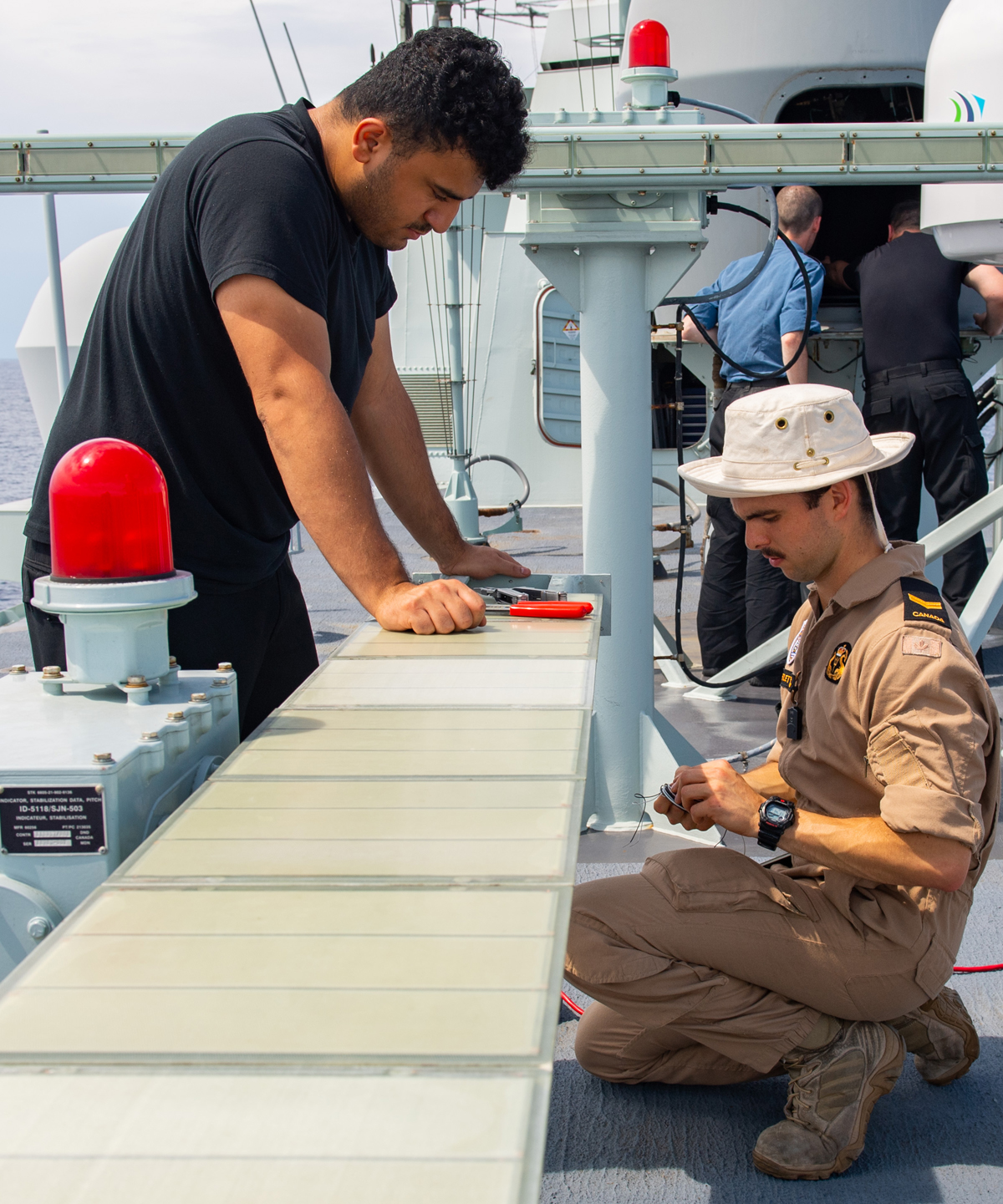HMCS Vancouver: Maintaining the ship’s sensors and satellite communications
By Lookout Production on Dec 06, 2022 with Comments 0

Sailors First Class Kasra Helali and Will Bartlett replace a panel on the horizon bar. Photo: Sergeant Ghislain Cotton.
Kateryna Bandura,
Lookout Editor
—
Have you ever wondered what kind of tasks the Combat Systems Engineering (CSE) department aboard HMCS Vancouver may perform while deployed?
To start, the CSE team is responsible for almost all the equipment that distinguishes a warship from any other ship of similar size. They maintain the radars, weapon systems, sonar, missiles, and military communications equipment.
“It’s a very broad range of equipment, which requires a broad range of skill sets,” said Lieutenant-Commander (LCdr) Riley Monsour, Vancouver’s Combat Systems Engineering Officer.
Recently, Vancouver’s CSEs conducted an investigation and disassembly maintenance of satellite communications, held within a dome structure. LCdr Monsour said the overall communication suite has several layers of redundancy to maintain internet connectivity.
“If it is lost completely, we are able to use our HF Radio system to communicate via voice and send messages, similar to the pre-internet era,” he said.
The dome was recently undergoing repairs due to a leak that caused salt water to get in; LCdr Monsour said even a small amount of salt will result in crystallization and could lead to grinding and could further result in many components needing replacement due to the impact it can have on antenna functions.
The technicians took the system apart to identify the extent of the damage and to preserve the components that could be salvaged.
During the maintenance, the Weapons Engineering Technicians – Communication Maintainers listen for the sound of grinding and make sure all antenna equipment is dry. If the antenna dome heater has collected condensation, desiccant packs need to be replaced and the breaker has to be reset.
“Hopefully, we will never have to do it again,” LCdr Monsour said. “We do get up and inspect the dome on regular intervals, at least once every six months.”
The maintainers also replaced a panel on the horizon bar, required for helicopter operations. It maintains a stable well-lit optical reference for helicopter pilots while they are conducting night time evolutions above the flight deck such as landing and hovering. As the ship rolls, the horizon bar uses the ship’s sensors to stay level; it’s bright so they have a visual reference after the sun has gone down and the horizon is no longer visible.
Throughout Vancouver’s six-month deployment, the CSE team has worked to maintain these systems while at sea – but this is only part of the work that the department does. Often recognized for their work on the weapons systems on board due to their flashy high-profile nature both in the fleet and internationally, their communications maintenance work is just as important.
If you’re interested in a career working as part of the Combat Systems Engineering team, visit: careers.ca/en/weapons-engineering-technician.
Filed Under: Top Stories
About the Author:





